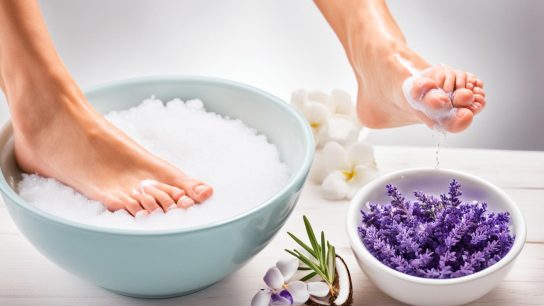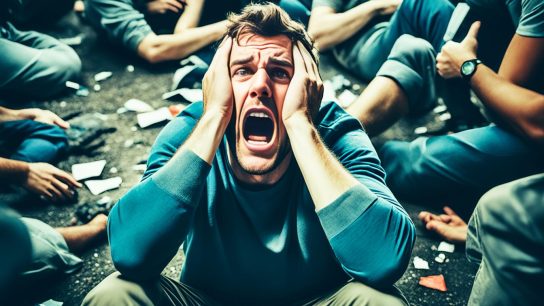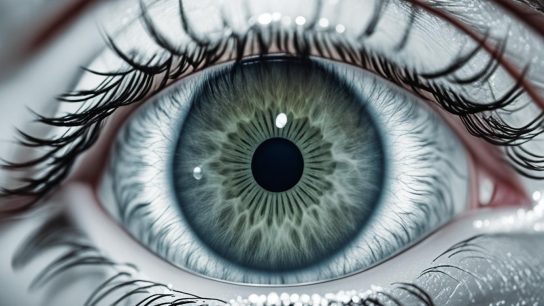Dealing with tiny bumps on your face can be frustrating, especially when they seem to never go away. Whether you’re dealing with acne breakouts or pesky milia, finding an effective solution is essential for a clear and smooth complexion.
When it comes to acne treatment, it’s important to avoid squeezing or picking at the bumps. This can lead to scarring and further inflammation. Instead, opt for a gentle cleanser that contains benzoyl peroxide. This powerful ingredient helps to kill the bacteria that causes breakouts, reducing redness and swelling.
In addition to benzoyl peroxide, incorporating niacinamide into your skincare routine can also be beneficial. Niacinamide helps to reduce inflammation and regulates oil production, improving the overall appearance of your skin.
If your skincare routines are not working and the bumps persist, it may be necessary to consult a dermatologist or primary care doctor. They can provide personalized recommendations and prescribe targeted treatments for your specific skin concerns.
Remember, achieving clear skin takes time and patience. By following these proven skincare tips and implementing the right treatments, you can effectively get rid of the tiny bumps on your face and restore a healthy and glowing complexion.
How to Get Rid of Tiny Bumps on Face Quickly?
What Are Tiny Bumps on the Face and How Do They Form?
Tiny bumps on the face, also known as milia or whiteheads, are small raised bumps that can be caused by dead skin cells and clogged pores. Milia form when keratin and dead skin get trapped underneath the surface of the skin. These bumps are usually harmless and painless, lacking the inflammation and redness associated with acne. They can be caused by oil-based products, sun exposure, topical steroids, or genetics.
Common Causes of Tiny Bumps on the Face:
- Dead skin cells
- Clogged pores
- Oil-based products
- Sun exposure
- Topical steroids
- Genetics
These factors contribute to the buildup of keratin and dead skin, resulting in the formation of tiny bumps on the face. While milia bumps are generally harmless and not a cause for concern, they can be frustrating and affect the appearance of the skin.
| Causes | Effects |
|---|---|
| Dead skin cells | Trapped under the skin’s surface, leading to the formation of small bumps |
| Clogged pores | Prevent the natural shedding of dead skin cells, contributing to the buildup of keratin |
| Oil-based products | Can clog pores and exacerbate the formation of tiny bumps on the face |
| Sun exposure | Causes skin damage and increases the likelihood of clogged pores |
| Topical steroids | May disrupt the skin’s natural balance and contribute to the development of milia |
| Genetics | Some individuals may be more prone to developing milia due to genetic factors |
Treating Tiny Bumps on the Face: Home Remedies and Over-the-Counter Products
Maintaining a consistent skincare routine is crucial when it comes to preventing and treating tiny bumps on the face. By following a proper routine, you can effectively manage these bumps and achieve a clear complexion.
Skincare Routine
A thorough skincare routine is essential for keeping your skin healthy and bump-free. Start with a gentle cleanser to remove dirt, excess oil, and impurities from your face. Look for cleansers that contain ingredients like salicylic acid or benzoyl peroxide, both of which help unclog pores and reduce inflammation.
After cleansing, exfoliate your skin to remove dead skin cells and unclog pores. Use a gentle exfoliator that won’t irritate your skin. Exfoliation promotes cell turnover and helps prevent the formation of tiny bumps.
Lastly, moisturize your skin with a lightweight, non-comedogenic moisturizer. This helps maintain the skin’s hydration levels and prevents dryness, which can lead to the production of excess oil and clogged pores.
Natural Remedies
In addition to a proper skincare routine, you can also incorporate natural remedies to reduce tiny bumps on your face. These remedies offer gentle yet effective solutions:
- Tea tree oil: With its antibacterial properties, tea tree oil can help fight the bacteria that cause breakouts. Apply a small amount to the affected areas using a cotton swab.
- Aloe vera: Known for its soothing and anti-inflammatory properties, aloe vera can help reduce redness and inflammation associated with tiny bumps. Apply pure aloe vera gel to the affected areas and leave it on for 15-20 minutes before rinsing off.
- Honey: Honey is a natural humectant that hydrates the skin while also possessing antibacterial properties. Apply a thin layer of honey to the affected areas and leave it on for 10-15 minutes before rinsing off.
These natural remedies can be used as spot treatments or as part of your overall skincare routine to help reduce the appearance of tiny bumps on your face.
Over-the-Counter Products
If natural remedies alone aren’t providing the desired results, you can turn to over-the-counter products for additional support. These products often contain active ingredients that target specific skincare concerns:
- Salicylic acid: This beta-hydroxy acid helps exfoliate the skin and unclog pores, making it an effective ingredient for treating tiny bumps. Look for cleansers, toners, and spot treatments that contain salicylic acid.
- Benzoyl peroxide: Benzoyl peroxide is known for its antibacterial properties and ability to reduce inflammation. It can help eliminate acne-causing bacteria while reducing redness and swelling. Look for products containing benzoyl peroxide in various strengths, such as gels, creams, or spot treatments.
When using over-the-counter products, it is important to follow the instructions carefully and start with lower concentrations to minimize any potential skin irritation.
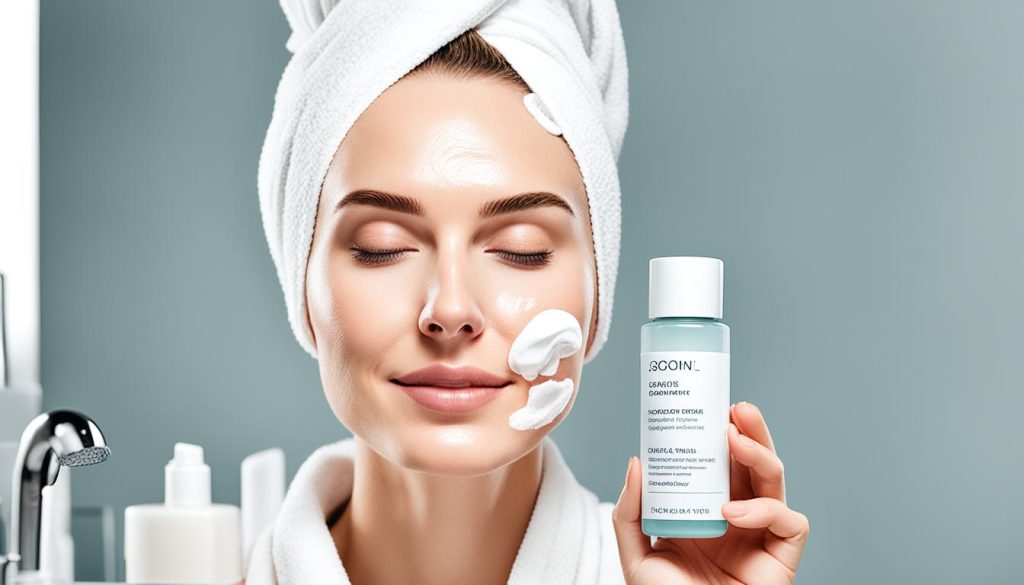
Combining a consistent skincare routine with natural remedies and over-the-counter products can help you effectively treat and manage tiny bumps on your face. Remember to be patient as skincare results may take time to show, and if symptoms persist or worsen, it is always recommended to consult a dermatologist for further evaluation and professional guidance.
Professional Treatments for Stubborn Face Bumps
In some cases, professional treatments may be necessary to treat stubborn face bumps. Consulting a dermatologist can provide personalized recommendations and treatments tailored to individual skin types and conditions.
Treatments such as chemical peels and microdermabrasion can effectively remove dead skin cells and unclog pores, but should be done by a trained professional to minimize risks.
| Treatment | Description |
|---|---|
| Chemical Peels | A chemical solution is applied to the skin, causing the top layer to peel off. This helps to remove dead skin cells, unclog pores, and improve the overall texture and tone of the skin. |
| Microdermabrasion | A procedure that uses a device with a rotating head to gently exfoliate the skin, removing dead skin cells and stimulating collagen production. This can help improve the appearance of fine lines, acne scars, and uneven skin tone. |
By seeking a dermatologist consultation, individuals can receive expert advice and guidance on the most suitable treatment options for their specific needs.
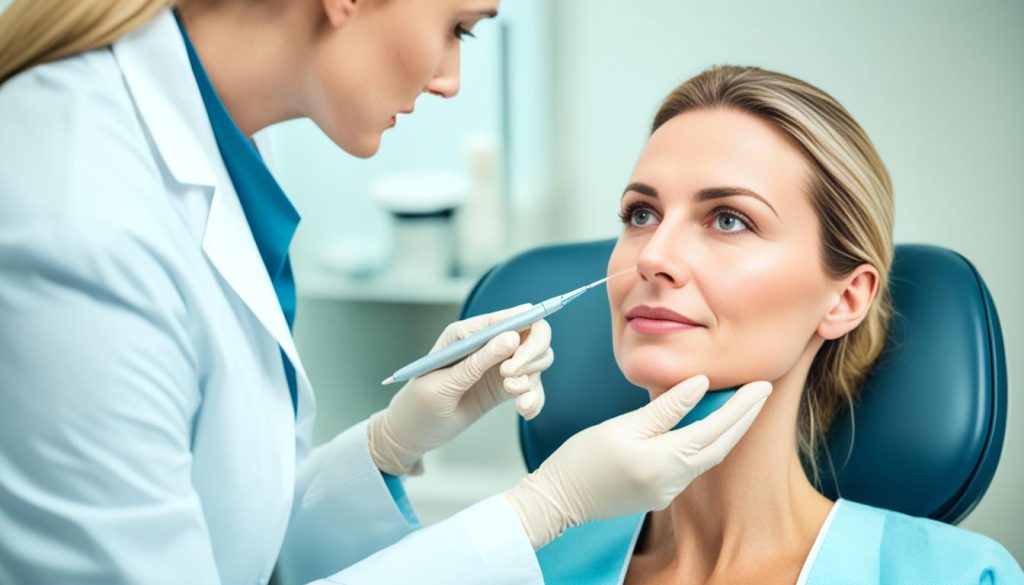
Always remember to consult a professional before undergoing any treatment to ensure the best outcome and minimize the risk of complications.
Preventing Future Bumps: Lifestyle Changes and Product Selection
To prevent future bumps on your face, it’s important to make certain lifestyle changes and choose the right skincare products. By incorporating these strategies into your routine, you can maintain a clear complexion and minimize the appearance of bumps.
Lifestyle Changes
Making lifestyle changes can greatly impact the health of your skin. Here are a few key strategies:
- Maintain a healthy diet: Eating a balanced diet rich in fruits, vegetables, and antioxidants can help nourish your skin from the inside out.
- Regular exercise: Engaging in regular physical activity can improve circulation and promote a healthy complexion.
- Effective stress management: Stress can contribute to skin issues. Find effective stress management techniques that work for you, such as meditation, yoga, or deep breathing exercises.
Choosing the Right Products
The products you use on your skin play a crucial role in preventing future bumps. Look for skincare products that contain ingredients known for their effectiveness in maintaining clear skin:
- Salicylic acid: This ingredient helps exfoliate the skin and unclog pores, reducing the likelihood of bumps forming.
- Glycolic acid: Known for its exfoliating properties, glycolic acid helps remove dead skin cells, revealing smoother, healthier-looking skin.
Incorporating these ingredients into your skincare routine can help keep your pores clear and your skin healthy.

Sun Protection
One often overlooked aspect of preventing future bumps is sun protection. The sun’s harmful UV rays can damage the skin and worsen existing skin conditions. It is essential to incorporate sun protection into your daily skincare routine. Here are a few sun protection tips:
- Use a broad-spectrum sunscreen: Look for a sunscreen that protects against both UVA and UVB rays with an SPF of 30 or higher.
- Apply sunscreen generously: Don’t forget to apply sunscreen to all exposed areas of your face, including the ears and neck.
- Reapply sunscreen regularly: Be sure to reapply sunscreen every two hours, especially if you’re spending extended periods in the sun.
By incorporating sun protection into your daily skincare routine, you can prevent skin damage and maintain a clear complexion.
| Lifestyle Changes | Choosing the Right Products | Sun Protection |
|---|---|---|
| Maintain a healthy diet | Look for products with salicylic acid | Use a broad-spectrum sunscreen |
| Engage in regular exercise | Incorporate glycolic acid into your routine | Apply sunscreen generously |
| Practice effective stress management | Reapply sunscreen regularly |
When to Seek Professional Help for Face Bumps?
If you’ve been dealing with persistent or worsening face bumps, it may be time to consult a dermatologist. While most milia bumps resolve on their own in babies, they may need to be extracted or removed in adults to prevent further complications.
Seeking professional help from a dermatologist is crucial for proper evaluation and treatment. Dermatologists have the expertise to identify the underlying causes of your face bumps and recommend suitable treatments tailored to your specific skin type and condition.
Some of the professional treatments that dermatologists may offer include:
- Milia removal: Dermatologists can perform procedures to manually extract or remove milia bumps. They may use a sterile needle to carefully extract the milia or employ cryotherapy, where liquid nitrogen is applied to freeze and remove the bumps.
- Cryotherapy: Cryotherapy involves using extreme cold to freeze off the milia bumps. This treatment is effective in removing milia and stimulating skin rejuvenation.
It is important to note that attempting to remove milia at home can lead to scarring and infection. Therefore, it is best to leave the extraction and removal of milia bumps to the expertise of a dermatologist.
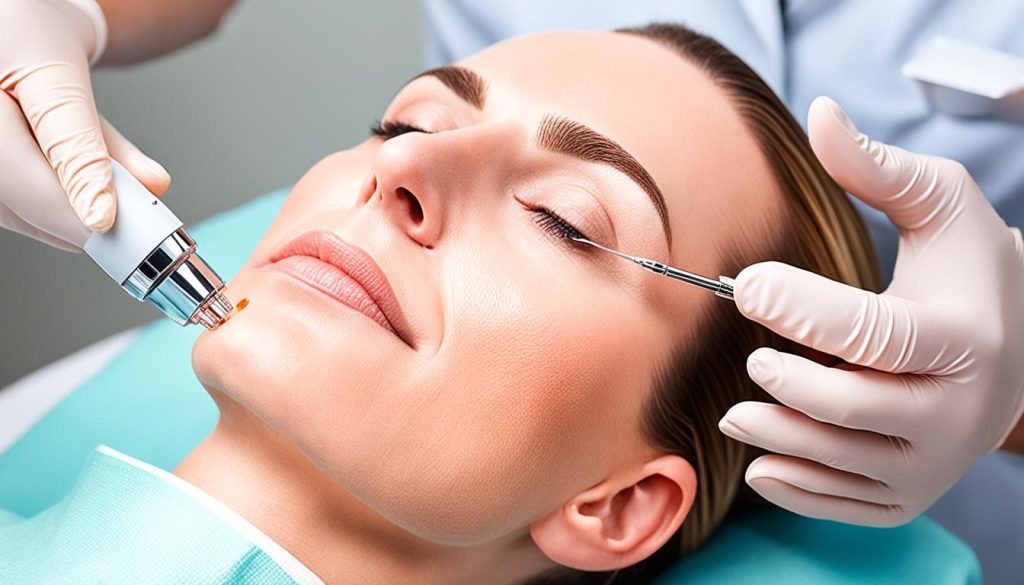
Professional Treatments for Face Bumps
| Treatment | Description |
|---|---|
| Milia Removal | Manual extraction or removal of milia bumps using a sterile needle or cryotherapy. |
| Cryotherapy | Using extreme cold to freeze off the milia bumps and promote skin rejuvenation. |
Conclusion
Summing up, dealing with tiny bumps on the face can be frustrating, but with the right skincare tips and treatments, you can effectively manage them. Consistency is key, so make sure to follow a dedicated skincare routine that includes gentle cleansing, regular exfoliation, and moisturizing.
Consider incorporating natural remedies, such as tea tree oil or aloe vera, into your routine to reduce inflammation and promote clearer skin. When it comes to over-the-counter products, look for ingredients like salicylic acid or benzoyl peroxide, which can help unclog pores and reduce inflammation.
If the bumps persist or become stubborn, it may be necessary to seek professional help. A dermatologist can provide personalized recommendations and treatments, such as chemical peels or microdermabrasion, to effectively address the issue.
To prevent future bumps, make lifestyle changes like maintaining a healthy diet, exercising regularly, and managing stress levels. Additionally, choose skincare products that are suitable for your skin type and incorporate sun protection into your daily routine to maintain a clear complexion.


